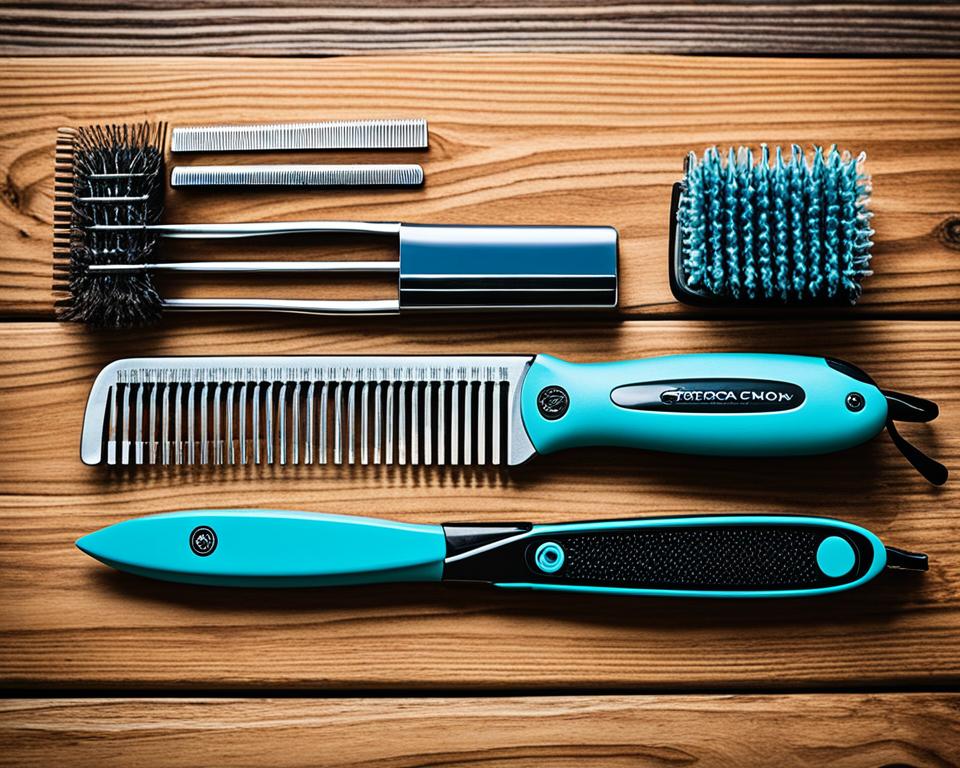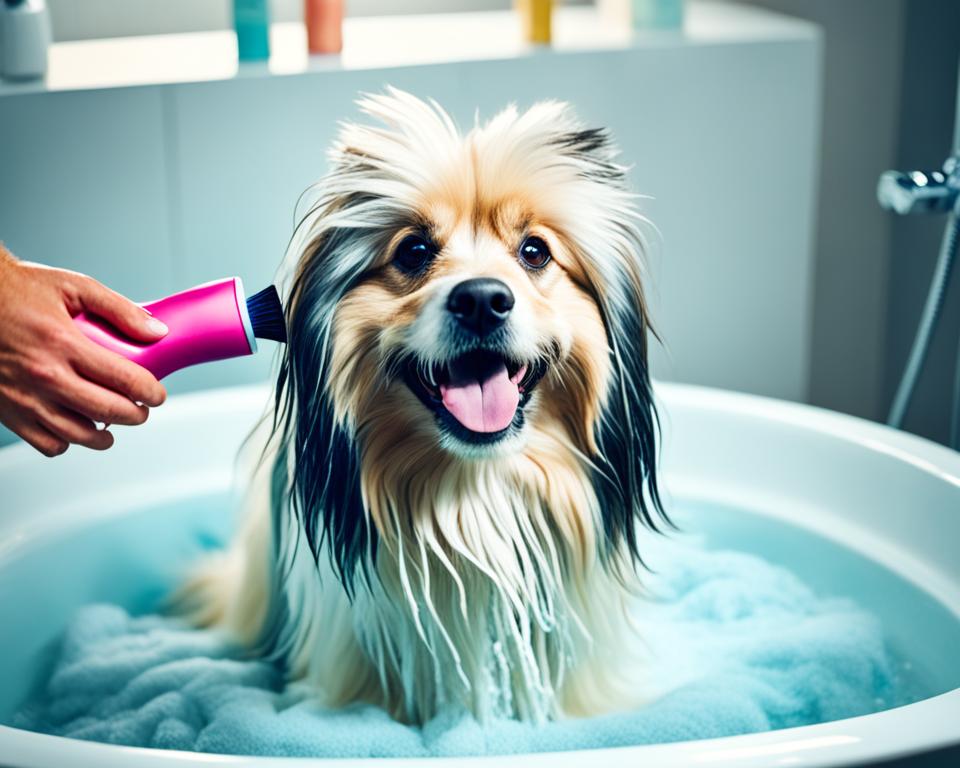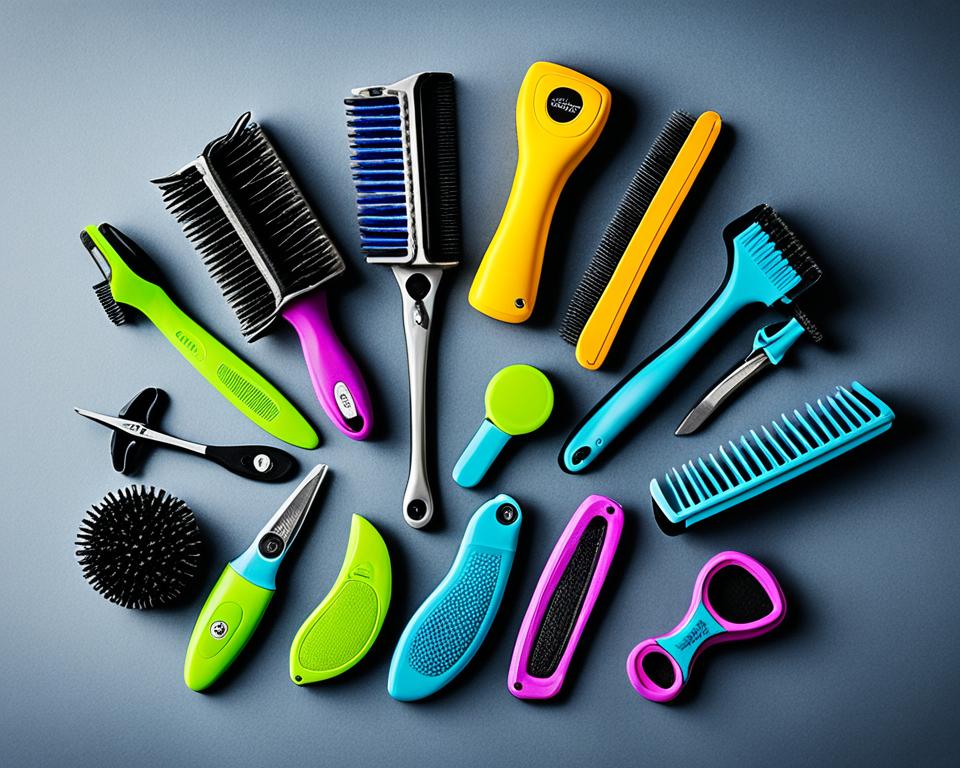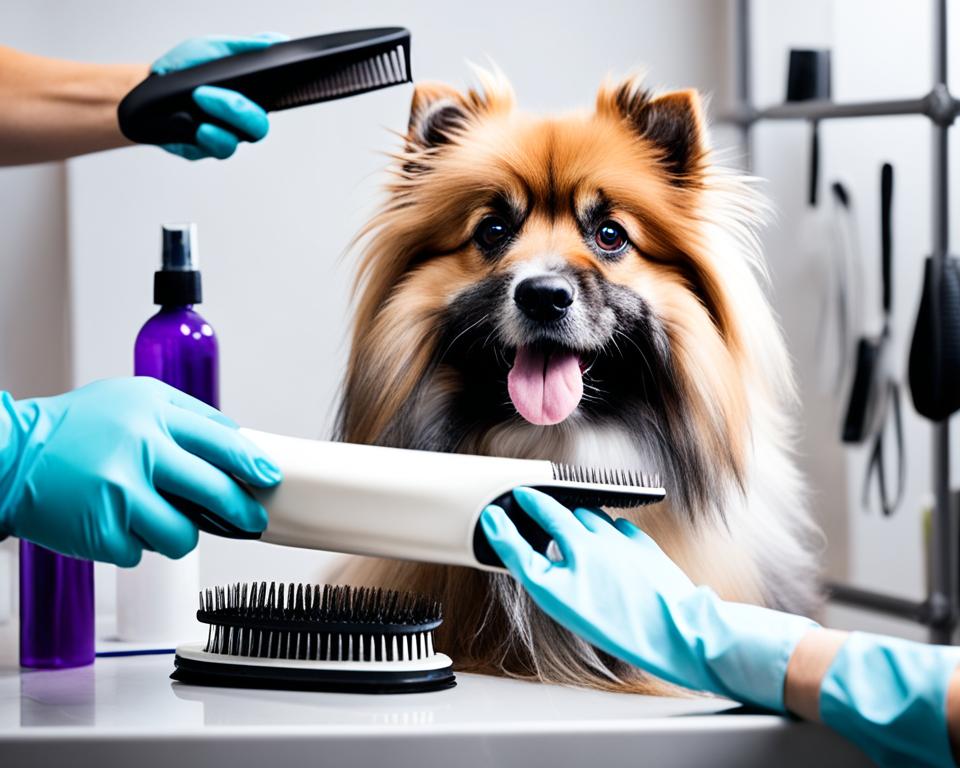I’ve worked with long-haired dogs for years. Grooming them is a big job. Breeds like Collies and Afghans need special care to stay looking great.
Daily brushing is crucial to stop mats and tangles. It keeps their coats shiny and healthy.
But grooming is more than just brushing. Using the right tools, like a long-toothed comb, helps a lot. It’s important for their health and happiness. A well-groomed long-haired dog looks amazing!
In this guide, I’ll share my best tips for grooming long-haired dogs. We’ll talk about daily care and professional grooming. Whether you’re new to dog ownership or experienced, you’ll find helpful advice here. Let’s get started and learn how to keep those beautiful locks in top shape!
Understanding Long-Haired Dog Breeds
Long-haired dog breeds need special care. Dogs like Shih Tzus, Afghan Hounds, and Maltese have different grooming needs. It’s important to start grooming early to help them get used to it.
Popular Long-Haired Breeds
Some popular long-haired breeds are:
- Afghan Hounds
- Bearded Collies
- Lhasa Apsos
- Maltese
- Shih Tzus
Unique Characteristics of Long Coats
Long coats protect dogs from the elements. Brushing them every day keeps them tangle-free and healthy. For Afghan Hounds, I use special combs to remove tangles and loose hair.
Benefits and Challenges of Long-Haired Dogs
Long-haired dogs are beautiful but need extra care. They need regular grooming to prevent mats and tangles. Using the right tools and products helps keep their coats healthy.
But, long coats can hide health problems. Regular vet visits are important. Finding a balance between the challenges and joys of owning a long-haired dog is key to a happy life together.
Essential Tools for Long-Haired Dog Grooming
Having the right tools makes grooming long-haired dogs easier. A good grooming kit is essential for your pet’s coat.
I use a pin brush daily to prevent mats and snags. A slicker brush helps remove loose fur and tangles. These tools are key for grooming your dog well.

A wide-tooth comb is great for thick undercoats. For tough tangles, a dematting brush is a must.
Here’s what you need for your dog’s grooming kit:
- Pin brush
- Slicker brush
- Wide-tooth comb
- Dematting brush
- Grooming scissors
- Nail clippers
- Dog-specific shampoo and conditioner
- Dog hair dryer
Let’s see how often these tools are used:
| Grooming Tool | Usage Frequency | Percentage of Owners |
|---|---|---|
| Pin brush | Daily | 76% |
| Slicker brush | 2-3 times per week | 68% |
| Detangling comb | Weekly | 62% |
| Electric clippers | Monthly | 85% |
The right tools are key to keeping your long-haired dog happy and healthy!
Grooming Tips for Long-Haired Dogs
Caring for long-haired dogs takes dedication and the right techniques. A consistent grooming routine keeps their coats healthy and easy to manage. Let’s look at key tips for brushing, bathing, and trimming their long fur.
Daily Brushing Techniques
Brushing is key for long coats. I brush my dog every day to stop tangles and remove loose hair. Use a comb with long teeth to get to the skin and brush gently.
For dogs like Afghan Hounds or Bearded Collies, start brushing from the bottom and go up, bit by bit.
Bathing and Drying Methods
Bathing long-haired dogs needs to be done with care. I wash my Pomeranian every 3-4 weeks with a special, soap-free shampoo. Massage the shampoo from top to bottom, focusing on tangled areas.

After washing, dry your dog with a big towel to soak up water. You can either blow-dry on a low setting or let the coat air-dry. Be patient during this step.
Trimming and Cutting Strategies
Trimming is key for long coats. I trim hair around the footpads and claws to stop them from slipping. For big styling needs, think about getting professional help. They know how to cut hair for dogs like Old English Sheepdogs or Shih Tzus.
| Coat Type | Brushing Frequency | Bathing Frequency | Trimming Needs |
|---|---|---|---|
| Long-haired | Daily | Every 3-4 weeks | Regular, especially around paws |
| Medium-haired | 2-3 times per week | Every 4-6 weeks | Occasional |
| Short-haired | Once per week | As needed | Minimal |
Every dog is different. Adjust these grooming tips to fit your pet’s needs and coat type. With regular care, your long-haired dog will have a shiny, healthy coat that gets lots of compliments.
Dealing with Common Long Coat Issues
Long-haired breed care can be tough, but it’s doable. I’ll give you some tips on handling common problems with long-haired dogs.
Preventing and Removing Mats
Mats are a big problem for long-haired dogs. Brushing every day helps prevent them. Start brushing from the ends and move up. A slicker brush works well for this.
For tough mats, use a detangling spray before brushing.
Managing Shedding
Shedding is normal, but too much hair loss is a problem. Using deshedding tools can help. Brush your dog 2-3 times a week, more often when they shed a lot.

Addressing Skin Problems
Long coats can hide skin issues. Check your dog often. Look closely at areas that get irritated easily, like under the belly and around the legs.
If you see redness, flakes, or your dog scratches a lot, see a vet.
| Issue | Prevention | Solution |
|---|---|---|
| Matting | Daily brushing | Slicker brush, detangling spray |
| Shedding | Regular grooming | Deshedding tools, frequent brushing |
| Skin problems | Regular checks | Vet consultation, appropriate treatment |
Remember, be patient with long-haired dogs. With regular care and the right tools, you can keep their coat healthy and looking great.
Professional Grooming for Long-Haired Dogs
As a dog owner, I know how important it is to groom our long-haired friends. Taking them to a pro every 6-8 weeks is key. This keeps their coat looking great and stops mats from forming.
Experts offer many services for long-haired dogs. They do thorough brushing, special baths, and precise cuts. They use top-notch tools and products for each coat type. For example, they might use a #4 FC or #5 FC clipper blade, not the shorter #10 blade that could harm the coat.
One big plus of professional grooming is the groomers’ skill. They know how to handle tricky spots and keep up with breed standards. This is super important for show dogs. For pets, they can make styles that are easy to keep up with. When picking a groomer, choose one with a good reputation and lots of experience. Grooming costs about $40 to $60, but it’s a great investment in your dog’s health and looks.

